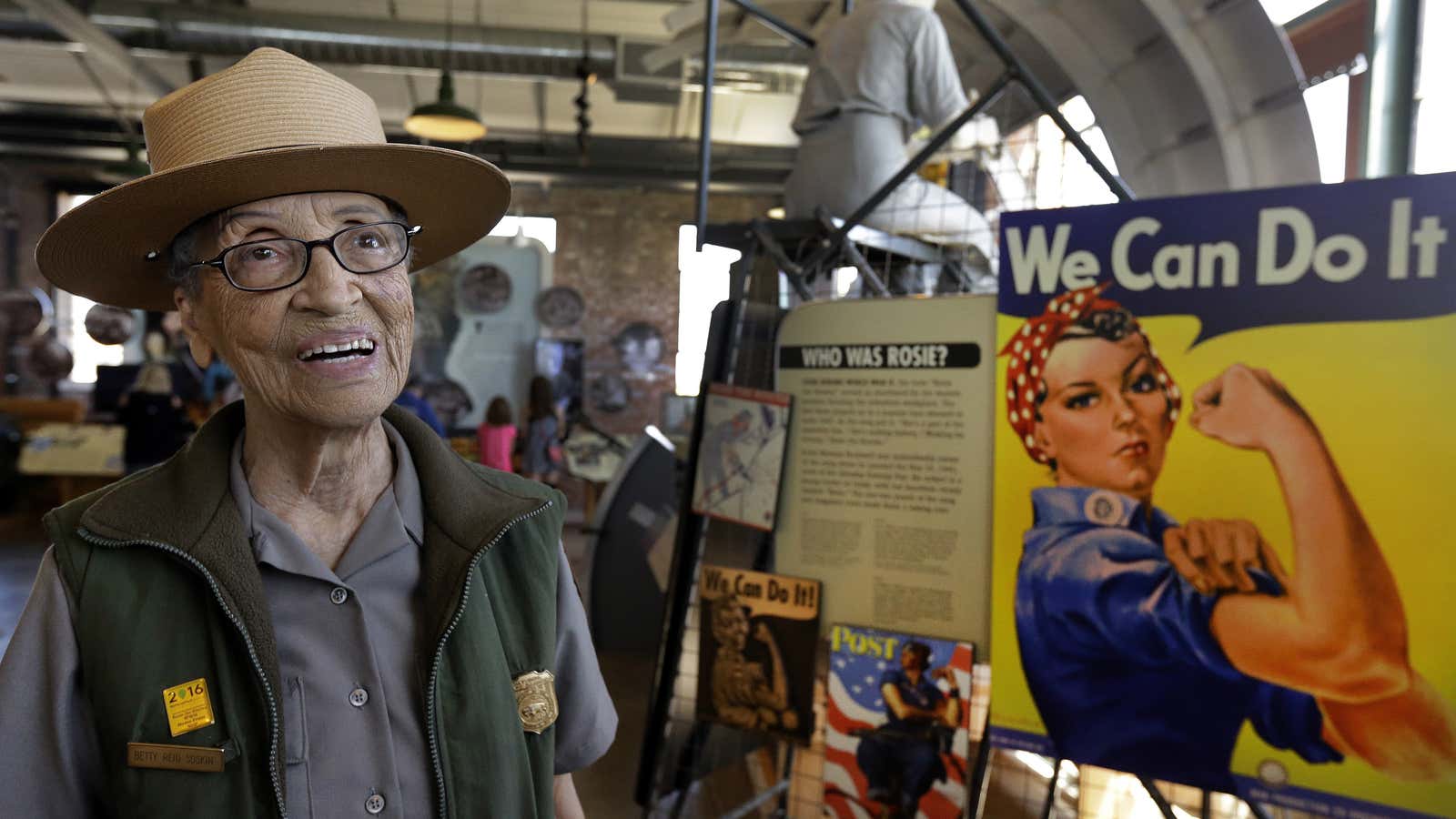Betty Soskin, a 96-year-old National Park Ranger, says we often get history wrong. She has seen the books written about her time, and knows what gets overlooked. ”I don’t think it’s by design or by grand conspiracy,” she says. “It’s just about who tells the stories.”
Usually, she explains, those stories are not told by black people.
Soskin, a black woman raised in Oakland, California, is now a tour guide and consultant for the Rosie the Riveter/World War II Home Front National Historical Park. The park is located in Richmond, about 10 miles north of Oakland. Richmond is the site of a shipyard that produced nearly 750 vessels during World War II, in what was perhaps the greatest feat of shipbuilding ever.
When I saw Soskin speak at the park, she showed the crowd a video that glorified the role of the workers in those shipyards—a video she found typical of history as it is normally told. It particularly highlighted the women who joined the industrial workforce to support the war effort, as immortalized by the iconic “Rosie the Riveter” posters. Soskin told us that while there is truth in this romanticized history—she speaks of a sense of togetherness that came from fighting fascism—it leaves out a lot of crucial details.
For Soskin, perhaps the biggest fallacy is the Rosie the Riveter myth itself—the notion that women entered the non-domestic workforce en masse during the war. Soskin says that most of the black women she knew were already working outside the home at that time. Perhaps World War II was a watershed moment for white women’s work, but that was not her experience. “It’s not that it’s not true,” she says. “It’s just that it is incomplete.” Soskin published a memoir about her life, Sign My Name to Freedom, earlier this year.
The statistics bare out Soskin’s experience. In 1930, 44% of black women were employed outside of their home, more than twice the 21% share of white women who did the same, according to the US Census Bureau. The jump in women working between 1940 and 1950 was much larger for white women than black women.
The video Soskin showed the audience also celebrated that Henry Kaiser, the man who owned the Richmond shipyards and would later found healthcare group Kaiser Permanente, set up childcare for workers. It was an early example of employer-sponsored care for kids. But historians often neglect to mention that these childcare centers were segregated: only white children were cared for.
As a file clerk at the time, Soskin says her work was far from integrated. The shipbuilders union would not allow black people to become members. To satisfy white workers who wouldn’t work alongside people of other races, auxiliary unions were set up. They were ostensibly separate but equal part of the larger union. Soskin was a member of one. In truth, they were far from equal. Black members were not allowed any control of union activities, and received fewer benefits. Eventually, some black workers ended up working alongside whites, but that was the exception, not the rule.
Soskin does not believe that historians and others memorializing World War II intend to erase the world she saw. In fact, she thinks they mean well, and are typically receptive to her criticisms. Soskin just believes she is living proof of how important it is to have a diverse set of voices in the room when trying to describe the past.
